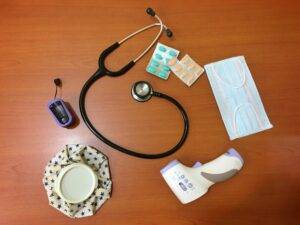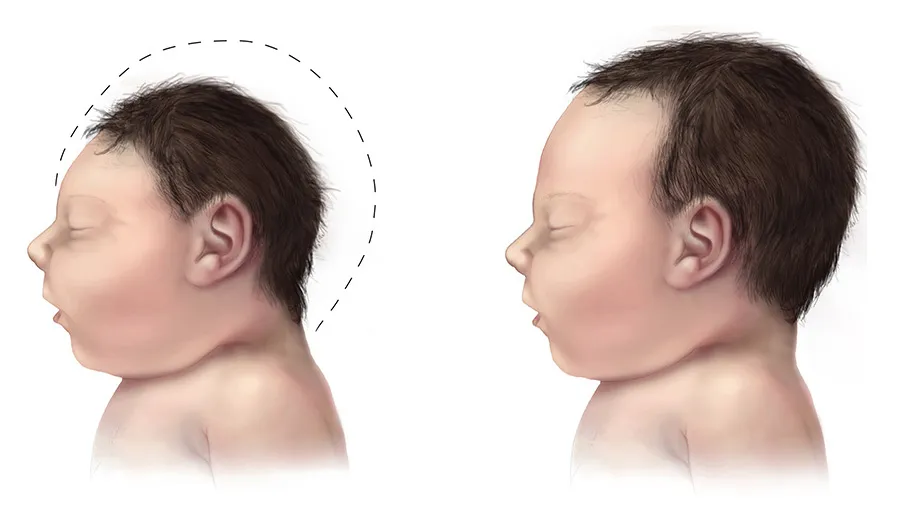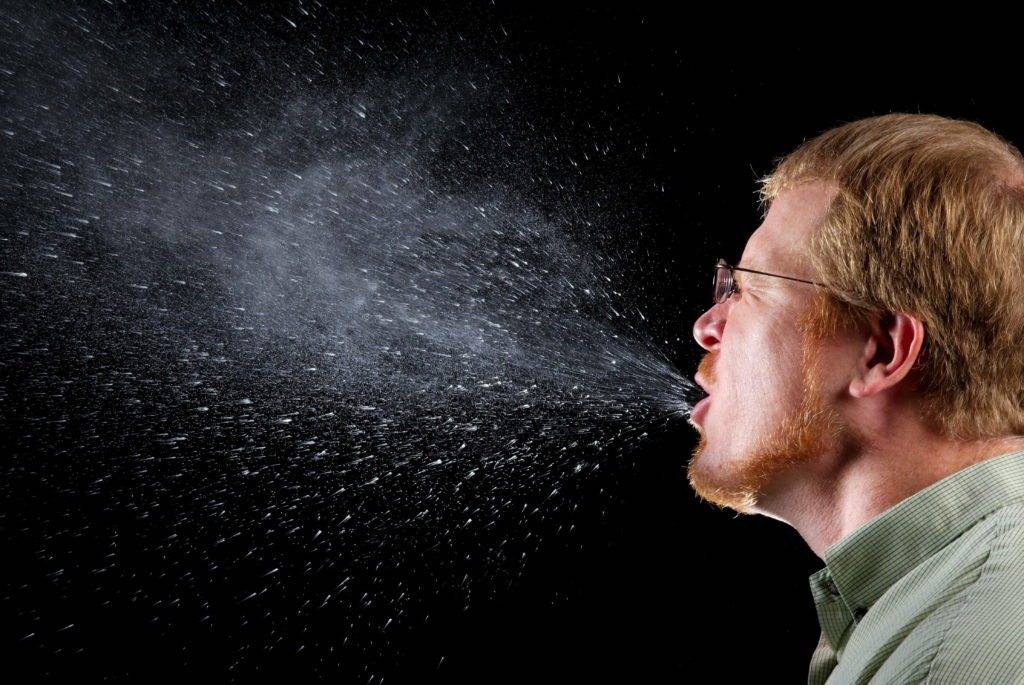Strep throat is a common yet potentially serious infection that affects many children. Identifying and treating strep throat promptly can prevent complications and help your child recover faster. This comprehensive guide will explore how to spot strep throat, what steps to take if your child has it, and how to prevent future infections.
What is Strep Throat?
Strep throat is an infection caused by Group A Streptococcus bacteria. This infection targets the throat and tonsils, leading to inflammation and pain. Unlike viral sore throats, strep throat is bacterial and requires antibiotic treatment to eliminate and prevent complications.
How Do Kids Get Strep Throat?
Strep throat spreads easily through respiratory droplets. Here are some common ways children can contract it:
- Direct Contact: The bacteria can be inhaled when an infected person coughs or sneezes.
- Surface Contact: Bacteria can live on surfaces like doorknobs, toys, and utensils. If children touch these surfaces and then touch their mouths, nose, or eyes, they can get infected.
- Close Quarters: Schools, daycare centers, and playgrounds are prime environments for spreading strep throat due to close contact and shared items among children.
Symptoms of Strep Throat in Kids
Recognizing the symptoms of strep throat early is crucial for prompt treatment. Here are the key signs to watch for:
1. Severe Sore Throat
A sore throat is one of the first to appear and most noticeable symptoms of strep throat. Unlike a typical sore throat from a cold, the pain from strep throat is often more severe and comes on suddenly.
2. Red and Swollen Tonsils
Examine your child’s throat using a flashlight. Red and swollen tonsils, sometimes with white patches or streaks of pus, are strong indicators of strep throat.
3. Difficulty and Painful Swallowing
Children with strep throat have trouble swallowing due to the pain and swelling in their throat and tonsils.
4. High Fever
A sudden, high fever, usually over 101°F, is common with strep throat. This fever often starts quickly and is higher than that seen with a common cold.
5. Headache and Stomach Pain
Children with strep throat complain of headaches and stomach pain. These symptoms can be less obvious but are significant clues, especially when combined with other signs.
6. Scarlet Fever Rash
Strep throat causes a red rash known as scarlet fever in some cases. This rash starts on the neck and chest and feels like sandpaper. It can spread to other parts of the body.
7. Swollen Lymph Nodes
Swollen and tender lymph nodes in the neck are another common sign of strep throat. Gently feel your child’s neck for any swelling or tenderness.
When to See a Doctor

If you suspect your child has strep throat, it’s important to consult a healthcare provider promptly. Here’s why:
- Accurate Diagnosis: Doctors can perform a rapid strep test or a throat culture to confirm the presence of Group A Streptococcus bacteria.
- Timely Treatment: Early diagnosis allows for timely antibiotic treatment, reducing the risk of complications and spreading the infection to others.
- Preventing Complications: Untreated strep throat can lead to serious complications like rheumatic fever, which can affect the heart and joints, or post-streptococcal glomerulonephritis, which impacts the kidneys.
Treatment for Strep Throat
Once strep throat is diagnosed, the following treatments are commonly recommended:
1. Antibiotics
The primary treatment for strep throat is antibiotics. Commonly prescribed antibiotics include penicillin and amoxicillin. Complete the entire course of antibiotics as prescribed, even if your child starts to feel better before finishing the medication. They help to:
- Kill the Bacteria: Antibiotics target and eliminate the Group A Streptococcus bacteria causing the infection.
- Reduce Symptoms: By addressing the bacterial infection, antibiotics help reduce the severity and duration of symptoms.
- Prevent Complications: Timely antibiotic treatment reduces the risk of complications, such as rheumatic fever and kidney inflammation.
- Limit Contagion: After 24 hours on antibiotics, children are generally no longer contagious, which helps prevent the spread of the infection to others.
2. Rest and Hydration
Encourage your child to rest and stay hydrated which is crucial for recovery. Drinking plenty of fluids helps keep the throat moist and alleviates discomfort. Warm broths, herbal teas, and cold treats like popsicles can be soothing. Fluids also support the body’s immune response to the infection.
3. Pain Relief
Over-the-counter pain relievers, such as acetaminophen (Tylenol) or ibuprofen (Advil), help manage the pain and reduce fever. Always follow the recommended dosage instructions of your healthcare provider or on the medication packaging.
4. Soothing Remedies
In addition to medication, home remedies help soothe throat pain. Warm salt water gargles, soft foods, and drinks provide relief. Warm broths, herbal teas, and cold treats like popsicles are gentle on the throat and help ease discomfort. Honey mixed in warm water (for children over one-year-old) and throat lozenges provide relief.
How to Prevent Strep Throat
Preventing strep throat involves good hygiene practices and awareness. Here are some effective prevention strategies:
1. Handwashing: Teach your child to wash their hands frequently with soap and water, especially before eating, after coughing or sneezing, and after using the restroom. Handwashing is one of the most effective ways to prevent the spread of germs.
2. Avoid Sharing Personal Items: Instruct your child not to share eating utensils, food, drinks, or personal items like toothbrushes with others. This reduces the risk of spreading or contracting the infection.
3. Covering Coughs and Sneezes: Instruct your child to use a tissue or their elbow to cover their mouth and nose when coughing or sneezing. Proper disposal of tissues and immediate handwashing are also important. This helps prevent the spread of droplets that carry the bacteria.
4. Sanitizing Surfaces: Regularly clean and disinfect commonly touched surfaces in your home, such as doorknobs, light switches, and toys, to reduce the spread of bacteria. This reduces the likelihood of the bacteria lingering on surfaces.
5. Avoid Close Contact with Infected Individuals: Keep your child away from individuals known to have strep throat or any other contagious illness until they have been treated and are no longer contagious.
Complications of Untreated Strep Throat
While strep throat itself can be uncomfortable, it’s the potential complications from untreated strep throat that pose significant risks. Here are some complications to be aware of:
- Rheumatic Fever: Rheumatic fever is an inflammatory disease that can develop after a strep throat infection. It affects the heart, joints, skin, and brain. Symptoms include joint pain, skin rash, and unusual movements. Rheumatic fever leads to long-term heart damage if not treated promptly.
- Post-Streptococcal Glomerulonephritis: A type of kidney inflammation that occurs after a strep infection. Symptoms include blood in the urine, swelling, and high blood pressure. It causes kidney damage and requires medical attention.
- Sinus and Ear Infections: If the strep bacteria spread, they can cause sinus infections (sinusitis) and ear infections (otitis media). These infections can be painful and may require additional treatment.
- Peritonsillar Abscess: An abscess can form around the tonsils, leading to severe pain, swelling, and difficulty swallowing. This condition often requires drainage and antibiotics.
FAQs About Strep Throat
How Long is Strep Throat Contagious?
Children with strep throat are contagious until they have been on antibiotics for at least 24 hours. It’s crucial to keep them home from school or daycare during this period to prevent spreading the infection.
Can Adults Get Strep Throat from Kids?
Yes, adults can get strep throat from children. Everyone in the household should practice good hygiene to avoid spreading the bacteria.
What If My Child Has Frequent Strep Throat?
If your child experiences recurrent strep throat, your doctor may recommend a tonsillectomy. This surgical procedure removes the tonsils and reduces the frequency and severity of infections.
When Should I Call the Doctor?
- Symptoms Are Severe or Persistent: If your child’s symptoms are severe or persist for more than a few days, seek medical advice.
- Breathing or Swallowing Difficulties: If your child has difficulty breathing or swallowing, it’s important to get medical help immediately.
- Signs of Dehydration: Watch for signs of dehydration, such as dry mouth, dark urine, or no tears when crying. These signs require prompt attention.
- Development of a Rash: If a rash develops or your child has a high fever that doesn’t respond to medication, contact your doctor.
Maintaining a Healthy Environment
Creating a healthy environment at home and in public spaces can significantly reduce the risk of infections like strep throat. Here are some tips to maintain a healthy environment for your child:
- Regular Cleaning: Ensure that your home is clean and sanitized. Pay special attention to high-touch surfaces, like doorknobs, countertops, and toys. Use disinfectants to kill bacteria and viruses.
- Healthy Diet: A balanced diet rich in fruits, vegetables, and whole grains boosts your child’s immune system.
- Adequate Sleep: Make sure your child gets enough sleep. Proper rest is crucial for a strong immune system and helps the body fight off infections.
- Physical Activity: Encourage regular physical activity. Exercise helps improve overall health and boosts the immune system, making your child less susceptible to infections.
- Avoiding Exposure: During peak seasons for illnesses, such as winter for the flu and strep throat, limit your child’s exposure to large groups and public places where germs are more likely to spread.
Educating Your Child

Teaching your child about good hygiene practices is essential. Here’s how you can educate your child to help prevent the spread of infections:
- Handwashing Technique: Show your child the proper handwashing technique. Teach them to wash their hands with soap and water for at least 20 seconds, and clean between fingers and under nails.
- Use of Hand Sanitizers: When soap and water are not available, hand sanitizers with at least 60% alcohol can be an effective alternative. Teach your child how to use hand sanitizer properly.
- Personal Space: Encourage your child to respect personal space and avoid close contact with individuals who are sick. This practice can reduce the risk of transmission.
- Proper Coughing and Sneezing Etiquette: Teach your child to cover their mouth and nose with a tissue or elbow when coughing or sneezing. Explain the importance of disposing of tissues properly and washing hands afterward.
- Recognizing Symptoms: Educate your child about the symptoms of strep throat and other common illnesses. Encourage them to inform you or a teacher if they feel unwell.
Understanding the Importance of Follow-Up
Follow up with your healthcare provider after your child has completed their course of antibiotics. A follow-up visit ensures the infection has cleared completely and checks for potential complications.
The Role of Nutrition in Recovery
Good nutrition is vital in your child’s recovery from strep throat. Ensure they have a balanced diet of fruits, vegetables, and fluids. Foods rich in vitamins and minerals support the immune system and promote healing.
Long-Term Health Considerations
While strep throat is common and usually resolves with treatment, it’s important to be aware of long-term health considerations. Monitoring your child’s overall health and staying alert to recurring symptoms can help ensure their well-being.
Treat Your Ch ild’s Strep the Soonest Possible
ild’s Strep the Soonest Possible
Strep throat is a common but treatable illness in children. Your proactive approach is key to your child’s health and well-being. Stay informed, practice good hygiene, and seek professional advice to keep your little one safe and healthy. Always consult a healthcare provider if you suspect your child has strep throat or if symptoms persist.
For more comprehensive information on pediatric health, visit Omega Pediatrics. For further reading on related topics, consider checking out these articles:
- 10 Fun Ways to Encourage Your Child to Drink More Fluids
- 6-Step Recovery Plan from Strep Throat for Your Child’s Quick Relief
These resources provide valuable information to help you navigate common childhood illnesses and ensure your child receives the best possible care.


 ild’s Strep the Soonest Possible
ild’s Strep the Soonest Possible

